
I’ve been familiar with the brand Yongnuo for a long time, as I first purchased one of their flash triggers back in 2015. I was impressed by how well those triggers worked and by their value, and still have some today that work just fine. I’ve been peripherally aware that they did make lenses, though the earliest lens I remember was essentially a clone of Canon’s EF 50mm F1.8 “nifty fifty”. I wasn’t crazy about the idea of essentially just reverse engineering someone else’s technology, so I didn’t pay it (or subsequent lenses) much attention. But a lot can happen in ten years, and when Yongnuo reached out to me with the idea of reviewing their YN 11mm F1.8S DA DSM WL, I did a little research and discovered that 1) this was an original design and 2) there was some unique innovation in that design. I said “yes”, and after spending some time with this roughly $300 USD little wide angle prime, there are a lot of things I’m very positive here. You can find out my full thoughts by watching the video review below…or reading on.
Follow Me @ YouTube | Patreon | Instagram | Facebook | DA Merchandise | Flickr | 500px | X
Thanks to Yongnuo for sending me a review sample of this lens. As always, this is a completely independent review. *The tests and most of the photos that I share as a part of my review cycle have been done with the APS-C mode (26MP) of my Sony a7RV camera.
__________________________________________________________________________________________________
This is an APS-C design that I’ve tested in Sony E-mount. At the moment, that is the only mount available, though I did note on Yongnuo’s site that both Fuji X-mount and Nikon Z-mount versions are on the way. An 11mm lens with Sony’s 1.5x APS-C crop has a full frame equivalency of 16.5mm – a nicely wide angle of view that is useful for many, many things.

The YN 11mm is a very feature rich lens, as we’ll see, but one of those innovations requires purchasing an inexpensive (under $25) remote control unit that leverages a 2.4gz wireless module built into the lens. Far from just being a basic remote control unit, this remote control allows you to remotely control focus, do aperture racking, set up A-B focus pulls, and more basic functions like take photos, start video, and do whatever you have the function button programmed to do. It’s a very clever little device particularly for video functions as you can do some of these key movements without touching the lens and introducing vibration.

It appears like this is the first of a new series of lenses from Yongnuo that they call the “Commander Series”, and will be followed by popular trio of 23mm, 33mm, and 56mm F1.4 lenses.
If you don’t speak Yongnuo, let me break down what those letters mean in the 11mm F1.8S DA DSM WL lens designation. In many ways this follows the Fuji naming convention which puts a list of features right in the name.
- S = Sony, or Sony E-mount
- DA = APS-C
- DSM = Digital Stepping Motor
- WL = Wireless control
The YN 11mm has a lot going for it, including a great focal length, great functionality, and even good close focus abilities…and that wide maximum aperture will allow you to blur a background fairly well.

There are also a few weaknesses along with many strengths, and we will break down it all in our review.
Build and Handling
Yongnuo is clearly going head to head with Sony with this particular lens release, as Sony also has a compact 11mm F1.8 lens that I reviewed a few years ago. There is some give and take between the two lenses, but the Sony wins on being more compact and light (181g vs 260g), while the YN 11mm has more features and a much lower price ($298 vs $498 USD). Here’s a spec comparison between the two lenses.

While not as small as the Sony, this is a very compact lens. I do my Sony E-mount APS-C tests on the APS-C mode of my Sony a7RV, as its 26MP in APS-C matches Sony’s a6700 for resolution. That means that I’m doing my test on a larger camera, but the YN 11mm is clearly small enough to work nicely even on the smallest of cameras.

The size is 66mm in diameter (2.6″) and 69mm (2.7″) in length. The lens weighs in at 260g or 9.2 oz. Up front we have a common 58mm front filter thread.

You’ll note the “Wi-Fi” radio signal logo next to the lens designation. That’s a first for me!
The lens barrel is made of metal, and it has a nice, anodized black satin finish. The lens design is very clean and modern.

A petal-shaped lens hood is included. While it isn’t anything particularly special, it is sturdier than some and bayonets into place with a reasonably precise feel.



There is a USB-C port for firmware updates covered by a small rubber gasket. Be careful when pulling it out, as it is small and wouldn’t be hard to lose.

The USB-C port will allow for quick and easy firmware updates, which is a smart move by Yongnuo considering that they are a third party lens maker, so they may have to rely on firmware updates to maintain compatibility with cameras in the future. The lens does include a USB-C cable in the box in case you don’t have one.
There is a metal lens mount with a weather sealing gasket attached. Yongnuo also claims a fluorine coating on the front element to resist fingerprints and moisture.


As noted, this is a very feature rich little lens. We have a function/focus hold button on the left side of the barrel. That function can be assigned from within the camera.

There’s also a custom switch that allows for a few different functions. In one mode, it serves a an AF | MF switch, with mode I being AF while mode II will switch to MF.

The manual focus ring has a nice feel to it overall, though the weight is on the lighter side. There is no obvious stepping, however, so focus moves fairly smoothly as I use the MF ring. You can program the custom switch to this function by turning the camera off, setting the position to II, and then holding the custom button down. Then power the camera back on, and you will feel a click in the lens.

You can probably guess how to change the function to use the remote control. Turn the camera off, set the switch position to I, and then hold down the function button while turning on the camera. Now position “I” will mean that wi-fi is turned on for remote communication while position “II” will mean that it is turned off. I would recommend keeping it in the off position when it is not in use. I haven’t noticed a battery drain issue, but I would think there is the potential for one.
The YN 11mm also has a robust approach to aperture control. It has an aperture control ring with one third stop detents between F1.8 and F16 along with an automatic position that can be accessed past F16 (there is a firmer detent there to keep from accidental switches between the two). The feel of the clicks is good, with clear delineation of each position but without being rough.

But in a very surprising move for this class of lens there is also a declick option with a switch on the right side of the barrel. Click that switch and you can smoothly rack through the aperture.

By contrast, the Sony lens has an AF/MF switch and a custom button, but no aperture ring at all, much less a declick option. This Yongnuo is perhaps the most feature rich under $300 lens that I’ve tested.
Take a closer took inside and you can barely see 7 rounded aperture blades. The aperture shape stays reasonably circular as the lens is stopped down.

The sunstar looks reasonably clean with the aperture stopped down (here at F8):

The minimum focus distance is 15cm and gives a maximum magnification figure of 0.15x, which is good enough to be useful. Here’s what MFD looks like:

You can get close enough to get a pretty nice level of magnification, but that will exaggerate the distortion – don’t expect a flat plane of focus!

The remote control has a small LCD screen and is primarily controlled through the main knob that can be clicked to switch through various functions and rotated to control those functions. There are two buttons for programming A and B focus pulls (just set the focus position, hold down the corresponding button for one second, and either “A” or B” where appropriate will light up. There’s a power switch on the side and also a custom button on the side that corresponds to the custom button on the lens. Clicking it will enable whatever function is programmed to that button on the lens.

Using the remote isn’t always intuitive, but if you’ll spend a few minutes with the included user manual it becomes easy enough to use. Range is up to 30 meters, which definitely gives you some flexibility for controlling off camera.
The Yongnuo 11mm F1.8 is a pretty impressive little lens when it comes to the functionality. Try to find another lens under $300 that gives you all of this!
Autofocus and Video
Yongnuo has equipped the 11mm F1.8 with what they call a “digital stepping motor” (DSM). I’m not entirely sure how a digital stepping motor varies from a typical stepping motor, but the end result is a quiet, fast, and accurate focus experience.


There is almost no noise to be heard even if I put my ear next to the lens barrel. There is the slightest buzz from the motor, but so quiet as to be nearly undetectable. Focus speed is good, too, with near instant transitions from one focus point to another either indoors or out. Wide angle lenses benefit from deeper depths of field, so there are fewer focus possibilities. But I’m not looking to undermine what I saw here; this is an excellent focus performance.
I also saw very good focus precision, even when closer and the depth of field more shallow.


I did note that focus didn’t quite perfectly keep up with a moving subject coming towards the camera. I shot some sequences of Nala, and while focus kept up at first, as she got closer (and the depth of field diminished) I found that focus was a little behind where it should be (mid-body rather than face).



If you want to shoot action at this focal length, that might be a reason to consider spending the extra money for the Sony 11mm F1.8.
For most other applications, however, I didn’t have any issues with focus.
On the video front I found mostly good results. Focus pulls were smooth and quick with no visible steps, and focus breathing is very minimal. My only potential complaint is that I didn’t feel that focus on my foreground subject was always as precise as what I would have liked.
The YN 11mm did fine with my “hand test” as well, where I alternately block the view to my face with my hand and then remove it. Focus transitioned nicely from my hand to my face. The minimal focus breathing helped make this transition nice and smooth.
I also had fairly good results with video clips where I slowly moved the camera to force change from one subject to another at varying depths of field. Focus transitions were fairly well damped, and I feel like this could be an interesting lens on a gimbal for vlogging or cinematic footage for weddings, walkthroughs, etc…. It’s light, focuses with confidence, and seems fairly mannerly for video AF.
All in all, focus is generally very good here.
Yongnuo 11mm F1.8S Image Quality Breakdown
The YN11mm has an optical design of 10 elements in 9 groups. Most of these are exotic elements, including low dispersion lenses, high refractive elements, aspherical lenses, and ultra low dispersion elements. A lot of fancy glass for an inexpensive lens! The MTF chart shows an extremely sharp center, a very sharp mid-frame, and mild regression to the corners, though they are still reasonably sharp. This MTF chart also shows an F8 report, and there we see a more even sharpness performance across the frame, though without the exceptional levels in the center and midframe visible wide open.


On a practical level I was repeatedly impressed by how sharp the lens was in the rule of thirds zones. The corners are generally less impressive, so my favorite images taken with the lens tended to be those where that excellent center 2/3rds performance was on display and the corners less important.

The corners are okay, but just not as impressive as the rest of the image circle even when stopped down (F5.6 here).


At least part of that is connected to the fact that, at the moment, there is no correction profile for RAW images in Lightroom. That means that by default lateral chromatic aberrations are left uncorrected, and, while I saw no issue with longitudinal CA before and after the plane of focus, there is definitely some fringing along the edges of the frame (LaCA).

Fortunately these are the variety easier to remove with one click. Getting rid of that fringing does improve things a bit.
For those interested in full frame coverage, here’s what the view looks like in full frame:

That means that there is a fair bit extra of the frame available after a manual crop, though with a caveat.

The caveat is that while you can expose more image (up to 40MP vs 26MP in APS-C crop), you are exposing more of the area where the lens is weakest, so expect that extra coverage to look increasingly mushy.

As is almost always the case, you would be better served by buying a full frame lens if you want full frame coverage.
There is some barrel distortion here, but the amount is tiny compared to what I saw on the Sony 11mm F1.8:

I had to use a whopping +40 to correct the barrel distortion on the Sony, but a much more reasonable +15 for the Yongnuo. In both cases the distortion is fairly complex, so a manual correction alone doesn’t do a great job. I’m not seeing corrections on the JPEG files, so Yongnuo may not have correction support on Sony. Here’s hoping we see a correction profile for Lightroom for the lens, as trying to correct the lines in the center results in increasing the stretching in the corners.

There is a fair bit of vignette here as well. I used a +74 to correct, or nearly three stops. That’s roughly similar to what I saw from the Sony 11mm as well.
So how about resolution and contrast? My tests have been done on a 26MP APS-C mode of my Sony a7RV. Here’s the test chart:

Here are F1.8 crops at roughly 200% from across the frame (center, mid-frame, and lower right corner).


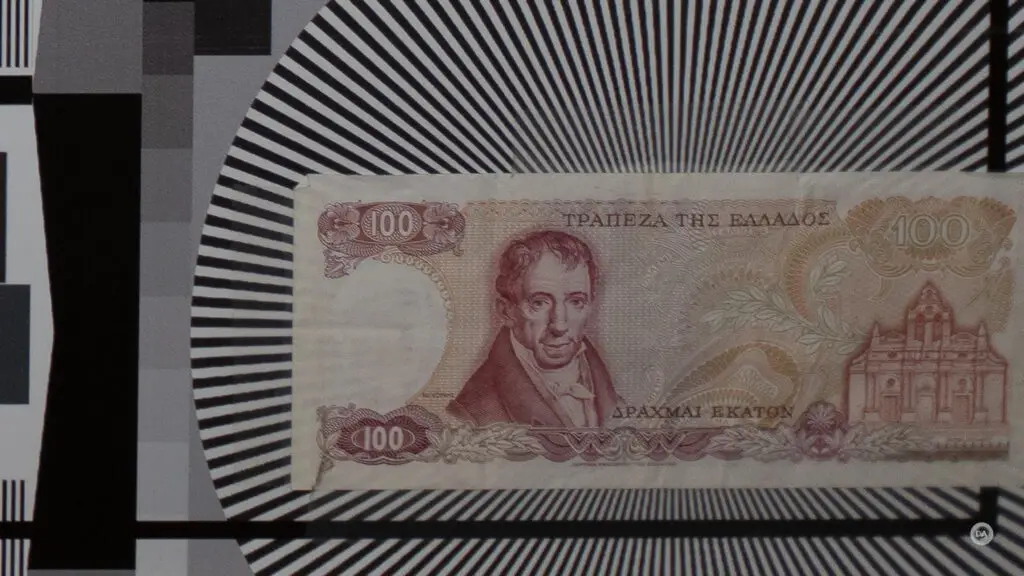
Both the center and midframe results look very good, as expected. The corner looks softer with less detail. Part of this has to do with the plane of focus at this distance not being flat (field curvature), as I was able to get a slightly sharper result (in the corner) by focusing in the corner, though this came at the cost of less focus/detail elsewhere.

But field curvature shouldn’t be as much of an issue when shooting at infinity, and in real world results I noticed the corners being softer (as noted).
At the same time, I don’t want to oversell this weakness, as it doesn’t look bad in real world work.



Stopping down to F2 makes a slight improvement to contrast and detail, with more improvement coming by F2.8.

Slight improvements come at F4 with more at F5.6. The edge performance is looking better.

You can see that improvement in this real world comparison that compares the F1.8 and F5.6 edge. There isn’t a huge difference on the left side of the image (moving into the rule of thirds zone), but a pretty noticeable one on the right side, which samples the edge at 100% magnification.

The edges of the image still aren’t pin sharp, but I would say acceptably sharp for most people. This is one area where the Sony 11mm F1.8 was better in my tests. Corners are sharper throughout the aperture range, so if this is a big deal to you, you might need to spend the extra money.
Sharpness peaks around F5.6, with F8 being very close to the same. Diffraction will start to soften the image after that, with a mild amount at F11 but a more obvious amount by F16:

Wide angle lenses aren’t really known for their bokeh, but I would say that the Yongnuo 11mm fairs better than most. When you get close to your subject, the quality of the background blur is fairly good.

Here’s another shot that shows a fairly good result.

This final example shows the YN 11mm at it’s best – great detail and contrast but also very nice bokeh and overall look to the image.


Flare resistance is most good but with a few hiccups. You can see from a couple of the images above that the lens does well with bright sun in the frame when shooting at wide apertures. The lens is weakest when the bright light source is in the corner, however, and as you stop the lens down the flare pattern becomes more and more pronounced (F1.8, F2.8, then F11 here).



The best case scenario is when you can position the sun correctly so you don’t have flare issues, and then stop the lens down and benefit from the very nice sunstar.

The optical glass here is good but not top notch. Colors were mostly good but in more challenging light I could definitely see a difference when compared with a more expensive lens that I happened to test at the same time. The Yongnuo required a more delicate touch in processing in harsher light as in shots like this one.

Colors were better in less harsh light, light after a rain here:

When compared to other lenses in this price class, however, I think the optics are competitive and the feature set is clearly much more robust than what competing lenses offer. So if not a flawless performance, this is a good one from a lens priced at under $300. If you’d like to see more image samples, check out the image gallery here.
Conclusion
I agreed to test the Yongnuo 11mm F1.8S DA DSM WL largely based on what I perceived as an innovative amount of features in an inexpensive lens. I do feel like Yongnuo has delivered on that front, as the YN 11mm has more packed into it than any sub-$300 lens that I’ve tested.

The autofocus performance was also a pleasant surprise, delivering quiet, quick autofocus changes that even largely translated to good video performance as well.

There’s some give and take with the optics, with a bit of vignette and distortion that isn’t being corrected by any profiles in camera or software yet. I also didn’t love the corner performance here. The optics remind me of Viltrox’s earlier lenses before they began to use higher end Hoya glass, which is to say good but not great. It’s hard to argue with the value of this lens, however, as not many years ago I was paying more than this for a manual focus only Samyang 12mm F2 with no features and an arguably weaker optical performance. This Yongnuo lens is a lot of lens for the money, and if you can live with its few shortcomings, you will have a much more versatile lens than what $300 will usually buy you!
Pros:
- Nice looking lens with nice build
- USB-C port for firmware updates
- Good manual focus ring and experience
- Autofocus motor is quiet and fast
- Good sharpness wide open
- Excellent sharpness stopped down
- Fairly good bokeh
- Interesting look to images
- Good colors
- Very useful focal length
- Great price to performance ratio
Cons:
- No lens hood
- Flare issues
- Focal length doesn’t seem to report properly
- Sunstars a little ugly
_________________________________________________________________________
GEAR USED:
Purchase the Yongnuo 11mm F1.8 @ B&H Photo | Amazon | Amazon Canada | Amazon UK | Amazon Germany
___________________________________________________________________
Purchase the Sony a7RV @ B&H Photo | Adorama | Amazon | Camera Canada | Sony Canada | Amazon Canada | Amazon UK | Amazon Germany
__________________________________________________________________
Purchase the Sony a6600 @ B&H Photo | Amazon | Camera Canada | Amazon Canada | Amazon UK | Amazon Germany | Ebay
Purchase the Sony a6400 @ B&H Photo | Amazon | Amazon Canada | Amazon UK | Amazon Germany | Ebay
_________________________________________________________________
Want to support this channel? Use these affiliate links to shop at: B&H Photo | Amazon | Adorama | Camera Canada | Amazon Canada | Amazon UK | Ebay | Make a donation via Paypal
Buy DA Merchandise https://bit.ly/TWIMerch

Keywords: Yongnuo, YN, 11mm, F1.8, Yongnuo 11mm F1.8, DSM, WL, F1.8S, APS-C, Review, Sony a6700, a6000, a6400, Sony a7RV, Review, Hands On, Dustin Abbott, Real World, Comparison, Sharpness, Bokeh, Flare Resistance, Autofocus, Image Quality, Sample Images, Video, Photography, let the light in, weathersealing, #letthelightin, DA



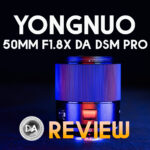
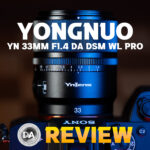



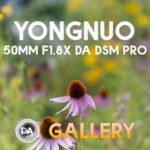
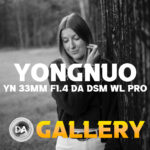
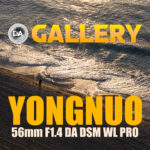
[…] YN 11mm F1.8 DA DSM Pro WL […]